TetherFund (USD.F) Explained: Stablecoin for Casino Finance
USD.F Price Impact Calculator
Please enter an amount to see price impact analysis.
Slippage Warning: This token has very low liquidity (only $5,855 daily volume), meaning large transactions will significantly affect the price.
Ever stumbled across a token called TetherFund while browsing a casino‑oriented DApp and wondered what the fuss was about? You’re not alone. Launched in early 2025, USD.F markets itself as a 1:1 USDT‑backed stablecoin built specifically for online gambling platforms. In this guide we’ll break down the token’s purpose, backing model, supply quirks, market performance, and why it may (or may not) matter to you.
What Is TetherFund (USD.F)?
USD.F is a stablecoin that aims to maintain a 1:1 peg with the US dollar by using USDT as its reserve asset. It was introduced in 2025 and runs on the BNB Smart Chain (BEP20) as its primary network, though the whitepaper also mentions deployments on Ethereum, Polygon, and Tron.
The project’s tagline - “the 1:1 USDT‑Backed Stablecoin Engineered for Casino Finance” - signals a narrow focus: providing gambling operators with a token that never swings in price, so players can place bets without worrying about volatility.
How Does the Backing Mechanism Work?
According to the token’s official documentation, every circulating USD.F token is minted only after an equivalent amount of USDT is locked into a dedicated VAULT smart contract. When a holder redeems USD.F, the contract burns the stablecoin and releases the underlying USDT back to the user.
Contradictorily, the whitepaper also claims the coin is "100% backed by USD reserves held in audited bank accounts … managed by regulated custodians." This dual description - on‑chain USDT backing versus off‑chain fiat reserves - creates uncertainty about the real collateral structure.
In practice, the only verifiable on‑chain evidence is the VAULT’s balance of USDT. Audits of the VAULT have not been publicly released, and no third‑party auditor names appear in the documentation, leaving a gap in transparency.
Supply, Circulation, and Test Tokens
The token’s total supply is listed as 1,499,112 USD.F, but only 10,000 of those are meant for actual use. These 10,000 tokens are fully backed by 10,000 USDT and sit in PancakeSwap liquidity pools for traders.
The remaining 1,489,112 tokens are labeled as "test tokens." They were minted solely for stress‑testing the casino game engines and are permanently locked - they cannot be redeemed or enter circulation. This unusual distribution means over 99% of the nominal supply has no backing at all, a rarity among stablecoins.
Data inconsistencies also appear across tracking sites: CoinMarketCap reports a circulating supply of 10,000, while CoinMarketSum incorrectly shows zero circulating tokens, further muddying the picture.
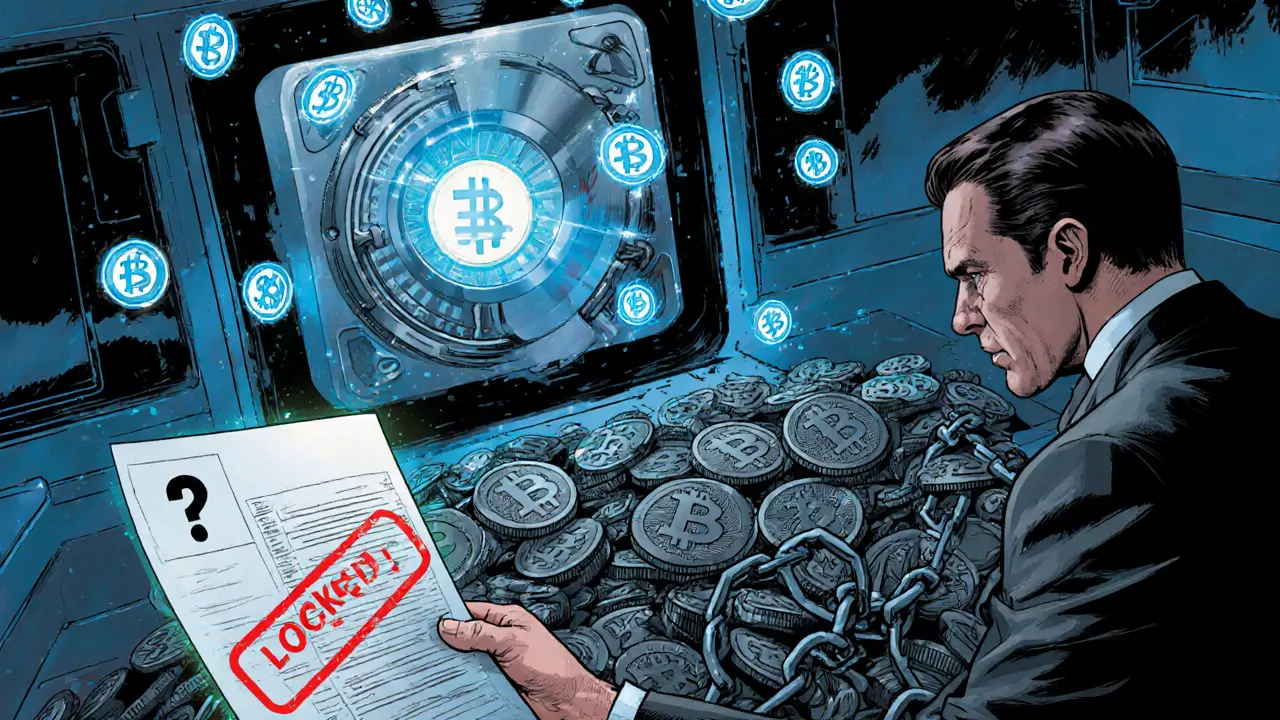
Price, Market Depth, and Trading Activity
Even with a declared 1:1 peg, USD.F trades slightly below parity. As of October2025, the price hovers around 0.990USDT (≈$0.99), reflecting a modest 1% de‑peg.
Daily volume is pathetically low - only about $5,855 - meaning any sizable trade will cause noticeable slippage. The token’s ranking on CoinMarketCap sits near #9252, underscoring its marginal presence in the broader crypto market.
Geographic price conversions illustrate the discrepancy further: €0.8521, £0.7357, C$1.37, ₹86.75, and ¥7.09, all derived from the sub‑par USDT rate.
Why Casino Finance?
The core value proposition is simple: eliminate volatility for gambling platforms. By tying each USD.F to USDT, the token promises instant, cheap deposits and withdrawals without the price swings seen in Bitcoin or Ethereum.
Additional claimed benefits include:
- Real‑time on‑chain proof of solvency via the VAULT.
- Low transaction fees on BNB Smart Chain, ideal for micro‑bets.
- Regulatory‑ready audit trails to simplify KYC/AML compliance for operators.
- Future‑proof infrastructure for cross‑platform jackpots and tokenized rewards.
In theory, a casino could integrate USD.F, let players fund their accounts instantly, and settle winnings without ever exposing users to price risk. However, no major online casino has publicly announced a live deployment of USD.F, and the token’s liquidity constraints make large‑scale betting impractical.
How to Acquire and Store USD.F
For the few adventurous users, the token is obtainable through a limited set of channels:
- Buy via BTCC using a credit/debit card (supported fiat: USD, KRW, TWD, JPY, AUD).
- Swap on PancakeSwap (BNB Smart Chain) by providing BNB or other BEP20 tokens.
Because USD.F lives on BNB Smart Chain, any wallet that supports BEP20 - such as Trust Wallet, MetaMask (with BSC network selected), or Binance Chain Wallet - can hold the token. Always double‑check the contract address from the official whitepaper before transferring.
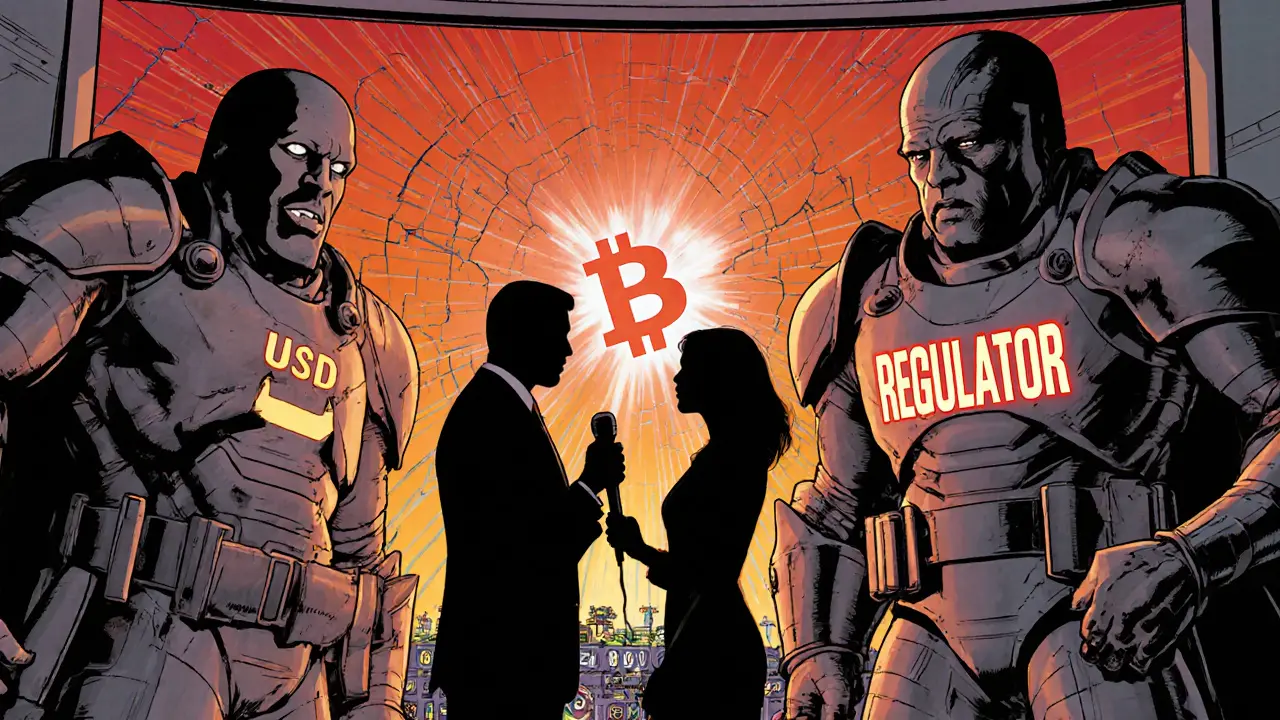
Risks, Criticisms, and Red Flags
Several factors raise caution flags for potential users or investors:
- Backing ambiguity: Conflicting statements about USDT versus fiat reserves erode confidence.
- Supply distortion: Over 99% of the token supply is non‑backed test tokens, a structure unheard of in reputable stablecoins.
- Liquidity scarcity: Sub‑$6k daily volume means any sizable purchase can move the price and incur high slippage.
- Lack of third‑party audit: No publicly available audit reports for the VAULT or the smart contracts.
- Minimal ecosystem support: Only PancakeSwap lists the token; major exchanges and DeFi platforms have not adopted it.
- Niche use‑case: Tied exclusively to casino finance, limiting broader utility.
Given these concerns, treating USD.F as a speculative curiosity rather than a reliable store of value is prudent.
Comparison with Established Stablecoins
| Metric | TetherFund (USD.F) | Tether (USDT) | USD Coin (USDC) |
|---|---|---|---|
| Backing | Claims 1:1 USDT lock (VAULT) & alleged fiat reserves | 1:1 USDT reserves (mixed fiat & cash equivalents) | 1:1 USD in regulated bank accounts |
| Primary Chain | BNB Smart Chain (BEP20) - also Ethereum/Polygon (limited) | Multiple (ERC‑20, TRC‑20, Solana, BSC, etc.) | ERC‑20, Algorand, Solana, Avalanche, etc. |
| Market Cap (Oct2025) | ≈$10k (10k circulating tokens) | $80bn+ | $45bn+ |
| 24‑h Volume | $5.9k | $150bn+ | $30bn+ |
| Typical Use‑Case | Casino finance, low‑fee micro‑bets | General crypto trading, remittances | Payments, DeFi, stablecoin savings |
The table makes it clear why USDT and USDC dominate the market: deep liquidity, broad exchange listings, and transparent audits. TetherFund sits in a narrow niche with minimal support.
Looking Ahead: Future Prospects
The roadmap in the whitepaper is vague - it mentions continuous audits and expanded casino partner integrations but provides no dates. Without a surge in adoption by gambling platforms or listings on larger exchanges, the token is unlikely to overcome its current limitations.
Regulatory pressure on stablecoins has intensified since 2024, demanding rigorous reserve proofs. TetherFund’s mixed‑message backing may attract scrutiny, potentially forcing the team to choose a single, verifiable reserve model.
For now, the safest bet is to monitor the token’s activity rather than commit significant funds.
Frequently Asked Questions
What blockchain does USD.F run on?
The primary deployment is on the BNB Smart Chain (BEP20). The whitepaper also cites Ethereum, Polygon, and Tron, but trading activity is mainly on BSC via PancakeSwap.
Is USD.F truly backed 1:1 by USDT?
Officially, every circulating USD.F token should be minted against an equal amount of USDT locked in a VAULT contract. However, the project’s whitepaper also claims fiat reserves, creating ambiguity. Only the on‑chain USDT lock can be verified.
Why are there over 1.4 million test tokens?
The developers minted test tokens to stress‑test their casino game engines. These tokens are permanently locked and not meant for circulation, which is why only 10,000 USD.F are usable.
Can I use USD.F for everyday purchases?
Practically no. The token’s liquidity is extremely low, and few merchants accept it beyond niche casino platforms. For regular payments, established stablecoins like USDT or USDC are far more viable.
How do I store USD.F safely?
Any wallet that supports BEP20 tokens works - Trust Wallet, MetaMask (with BSC network), or Binance Chain Wallet. Always verify the contract address from the official whitepaper before adding the token.

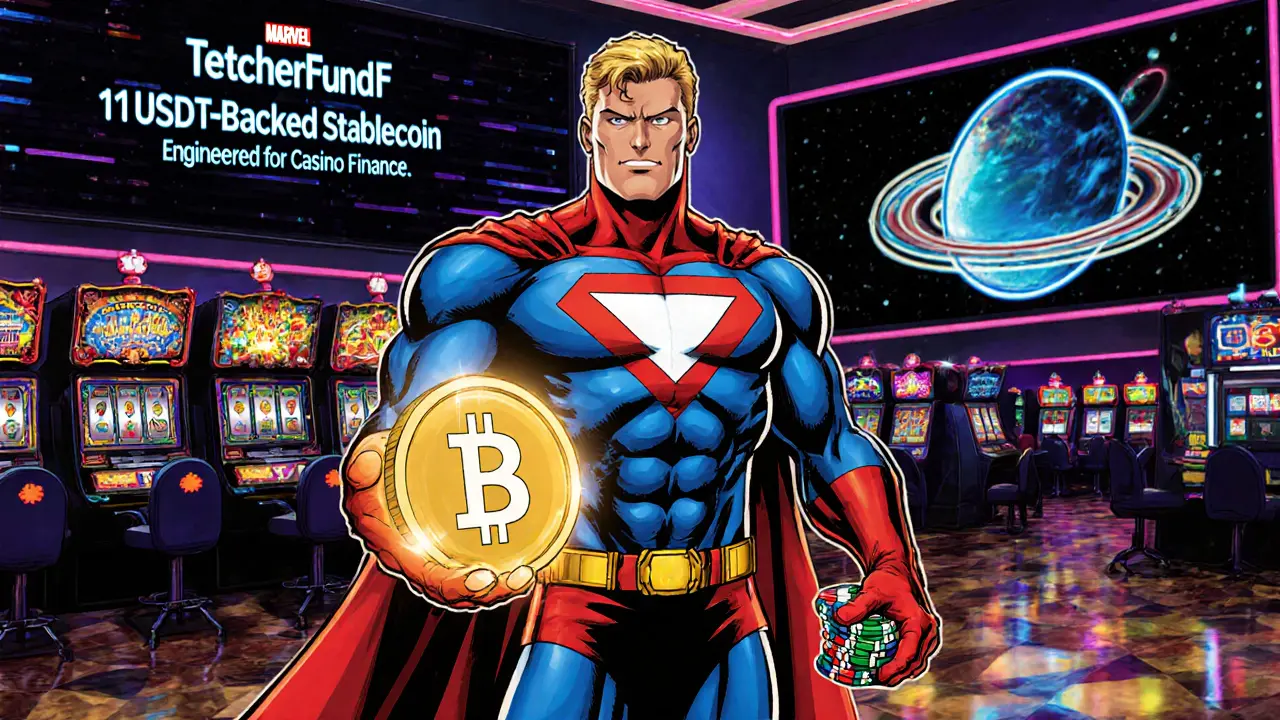
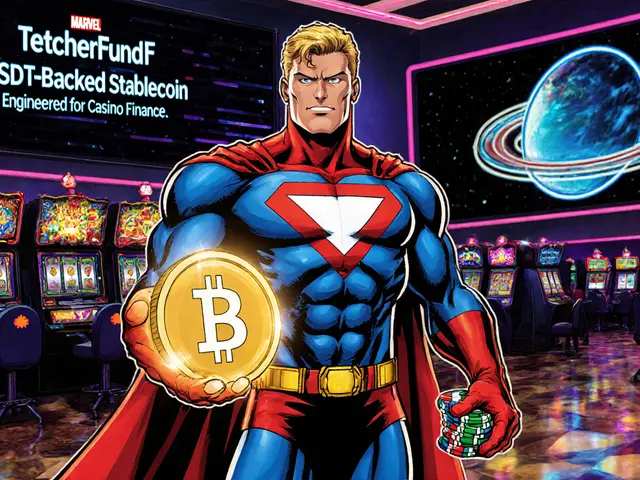



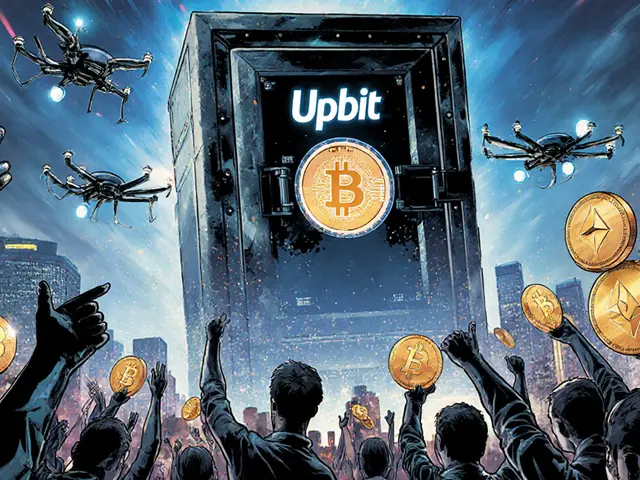
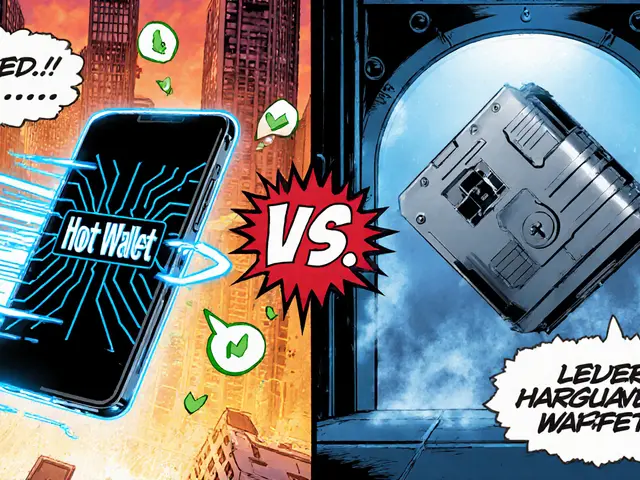
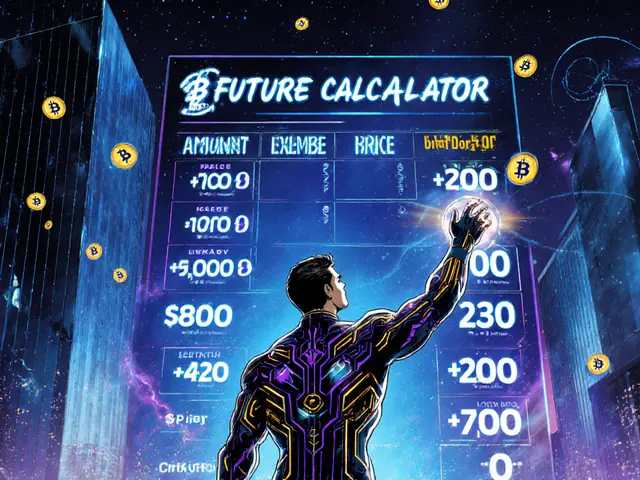
Alright, let’s break this down so everyone feels comfortable with the idea of a casino‑focused stablecoin. First off, TetherFund (USD.F) is built on the same principle as any other stablecoin – it’s pegged 1:1 to the US dollar, which means you shouldn’t see wild price swings under normal market conditions.
What makes this token different is that the issuing platform is trying to embed it directly into gambling ecosystems, so you can use it for bets, payouts, and even loyalty programs without constantly converting back to fiat.
This could reduce transaction fees, because you’re staying inside the same blockchain rather than hopping through multiple exchanges.
On the flip side, the liquidity numbers in the post are a little scary – only about $5,800 a day, which means a big purchase could move the price a lot more than you expect.
That’s why the slippage warning is there; it’s not just a polite note, it’s a real risk if you’re trying to move thousands of dollars in one go.
For casual gamblers who just want to buy a few dollars worth of USD.F, the impact will be negligible, but for whales or casino operators moving large sums, you might see the price drift a few cents up or down.
Another thing to keep in mind is regulatory scrutiny – stablecoins in gambling are still a gray area in many jurisdictions, so you could see sudden freezes or restrictions if a regulator decides to step in.
From a user‑experience standpoint, the idea of not having to deal with credit card fees or bank delays is appealing, especially for international players where fiat transfers can take days.
However, you still need a wallet that supports the token, and not everyone is comfortable managing private keys, so there’s a learning curve.
One practical tip is to keep only a small, spendable amount of USD.F in your wallet and store the bulk on a secure exchange or custodial service, reducing the risk of loss.
If you’re a casino operator, using USD.F could simplify accounting – the token’s price is always tied to $1, so you don’t have to constantly re‑value your holdings.
Yet, the low daily volume means you’ll need to provide liquidity yourself or partner with a market‑maker to keep trades smooth.
In short, the concept is promising for niche use‑cases, but the current liquidity and regulatory uncertainties make it a bit of a gamble itself.
Approach it with caution, test with small amounts, and keep an eye on the price‑impact calculator before making big moves.
Happy betting, and stay safe out there!
Look, the whole "stablecoin for casino finance" hype is just a thin veneer over classic arbitrage opportunities that anyone with a basic understanding of tokenomics already knows. The peg is only as strong as the reserves, and the post didn't even mention audit frequencies, so you’re basically trusting an opaque ledger. If you think the low liquidity is a novelty, think again – it’s a built‑in price‑impact mechanism that will chew up any sizeable order, rendering the token useless for the very purpose it claims to serve. Moreover, the regulatory risk isn’t a footnote; it’s a looming deadline that could shut down the entire ecosystem overnight. In short, unless you enjoy watching your capital evaporate in a single slippage event, steer clear.
Yeah, because that’s exactly what the financial world needs.
Sure, the concept sounds slick, but let’s be real – using a low‑volume stablecoin in a high‑turnover casino environment is like trying to pour a bucket of water into a fire hose. The math checks out on paper, yet the practical friction of frequent price adjustments will likely outweigh any fee savings. In other words, you’ll spend more time managing slippage than actually playing.
Hey folks! 🌟 This could actually make betting smoother for newcomers, especially if they’re scared of credit‑card fees. Just remember to start small and watch that slippage meter – don’t let it ruin your fun! 🎲🚀
It’s absurd that anyone would champion a token with such pathetic daily volume. If we want to protect our financial sovereignty, we should shun these half‑baked experiments and stick with proven domestic currencies. The moment foreign platforms try to infiltrate our markets with unstable coins, we’ll see the real damage.
What they don’t tell you is that these “stablecoins” are actually part of a massive control scheme. The low liquidity is intentional – it forces you to buy at a premium while the hidden entities siphon off the real value. Keep your eyes open, because every transaction is a tiny data point for the big brother network tracking your bets.
While the concerns about data privacy are valid, it is also important to weigh the actual technical specifications of the token. The smart‑contract code is publicly auditable, and unless a malicious upgrade is introduced, the token’s peg mechanism remains transparent. Users can mitigate risks by employing hardware wallets and limiting exposure.
Let’s step back for a moment and acknowledge that every financial innovation carries a degree of risk, but also potential. By framing USD.F solely as a danger, we overlook its capacity to streamline cross‑border betting, especially for underbanked regions. A balanced discourse can guide regulators and developers toward safer implementations.
It is morally reprehensible to push a financial product onto vulnerable gamblers without full disclosure of its volatility traps. Developers have an ethical duty to ensure transparency, and users deserve honest warnings beyond a mere slippage notice.
The very notion of a “stablecoin” invites philosophical inquiry: can any digital token truly embody stability when its value rests upon mutable trust? One must contemplate the epistemological foundations of monetary constructs and recognize that the illusion of constancy may mask deeper systemic fragility.
Contrary to the prevailing optimism, I maintain that integrating USD.F into casino ecosystems may exacerbate existing regulatory ambiguities rather than resolve them. The token’s limited liquidity is a symptom of market disinterest, suggesting that its adoption could be more of a speculative stunt than a genuine solution.
Honestly, this whole thing smells like a front. They’re probably using the stablecoin as a funnel to launder money under the guise of “gaming”. I’d stay far away unless you want to get tangled in some shady offshore schemes.
Cool idea, but I’d keep a low profile with it. Maybe just try a tiny amount and see how the price reacts.
From a national perspective, the propagation of such dubious financial instruments undermines the integrity of our economic framework. It is incumbent upon sovereign entities to enforce stringent oversight, thereby safeguarding citizens from covert monetary manipulation.